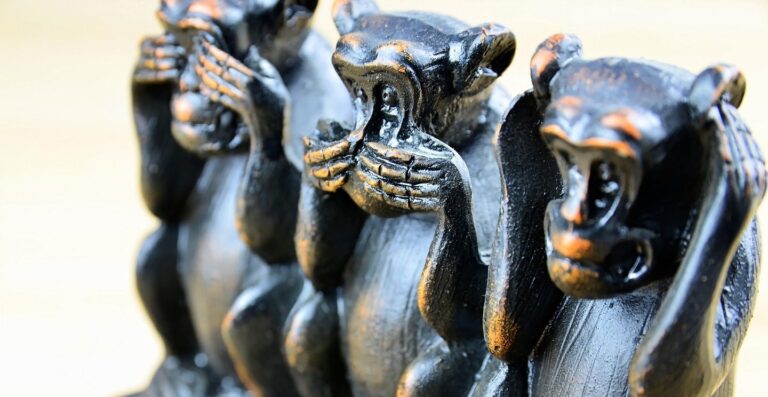Passion for Life
By Ryan Castle
When we envision a life lived well and a mind at peace, the image that often comes to mind is of a tranquil, placid individual. We see someone speaking quietly, smiling gently, and frequently sitting in serene contemplation. However, the path to inner peace does not exclusively require passivity. On the contrary, some individuals find their peace through passionate enthusiasm, and find these two states are not contradictory but complementary facets of a healthy person.
Research has consistently shown that quiet, contemplative meditation, usually referenced as mindfulness, can reduce stress and inflammation, boost immune function, and enhance overall longevity.[i] However, studies have also revealed that engaging in activities that evoke enthusiasm and excitement can improve brain health, neurological functions, and recovery from physical trauma.[ii] Other research shows these experiences can improve cardiovascular health, enhance immune responses, and reduce inflammation.[iii] Excitement and joy, like relaxation, play crucial roles in healing and maintaining a healthy body. This dual approach suggests that a balanced life involves both moments of quiet reflection and bursts of passionate activity.
Numerous mind-body and spiritual traditions acknowledge the value of passion and enthusiasm. Practices such as Kundalini yoga[iv] and Vajrayana Buddhism,[v] as well as more modern traditions like ecstatic dance and holotropic breathing,[vi] embrace the cultivation of intense emotions. These practices reflect a long-standing recognition that human passions and intense emotions should be recognized and refined, rather than avoided. These traditions teach that harnessing the energy of our passions can lead to profound personal growth and spiritual development. For example, Kundalini yoga involves intense physical postures, breathwork, and chanting, all designed to awaken the dormant energy within us and channel it towards spiritual awakening, with effects on depressive states that are on par with cognitive behavioral therapy.[vii]
There is a reason these approaches has been necessary throughout history. There are pressures and difficulties that can arise from one’s life being overwhelmed with intense emotions, such as anxiety, grief, and dread. But as anyone who has dealt with depression knows, there is danger also in the absence of intense emotions. Depression often manifests not in uncontrollable weeping, but in a uncontrollable apathy.[viii] This loss of affect impacts the entire experience of life, weakening the immune system, the heart, and increasing the risk of dementia.[ix] Studies have shown that chronic depression can lead to a host of physical health problems in addition to its obvious mental health consequences. A life devoid of passion and enthusiasm can literally be deadly.
While counseling, meditative practices, and medication are well-known resources for addressing depression and other mental health issues, the role of enthusiasm and passion for life in both preventing and recovering from depression cannot be overstated. Studies have shown that discovering and nurturing something one is passionate about can significantly extend both the years and the quality of life.[x] Interestingly, it appears that more individualistic societies, like much of the Western world, have a particularly strong need for passionate pursuits, possibly as a response to relatively lower community support.[xi] The things that we are passionate about are as varied as all of us. Whether it’s dancing with friends, painting alone, or chanting a mantra, the key is to experience excitement and positive affect.[xii] The goal is not adrenaline, but genuine enthusiasm. Engaging in activities that bring joy and excitement can create a positive feedback loop called harmonious passion, where the physical benefits of these activities further enhance mental and emotional well-being.[xiii]
The importance of quieting the mind remains undiminished. Quiet mindfulness and passionate enthusiasm are not opposing forces but two parts of a whole. Embracing this dual approach to well-being requires a shift in how we perceive and cultivate our inner lives. It involves recognizing that moments of quiet reflection and bursts of passionate activity are both essential components of a balanced, healthy life. This perspective encourages us to explore and embrace our passions, to seek out activities that bring us joy and excitement, and to integrate these into our daily routines alongside practices of mindfulness and meditation. In doing so, we can create a life that is not only peaceful and serene but also vibrant and full of enthusiasm.
Imagine again a person who knows inner peace, but this time see a fuller picture. Visualize someone meditating quietly in the morning and singing joyously (and badly) at karaoke in the evening, hear a reverent “om” and a loud belly laugh in the same voice.
We are, none of us, just one thing.
References
[i] Fountain-Zaragoza, S., & Prakash, R. S. (2017). Mindfulness training for healthy aging: impact on attention, well-being, and inflammation. Frontiers in aging neuroscience, 9, 11.
[ii] Sigmundsson, H., Dybendal, B. H., & Grassini, S. (2022). Motion, relation, and passion in brain physiological and cognitive aging. Brain Sciences, 12(9), 1122.
[iii] Matsunaga, M., Isowa, T., Yamakawa, K., Tsuboi, H., Kawanishi, Y., Kaneko, H., … & Ohira, H. (2011). Association between perceived happiness levels and peripheral circulating pro-inflammatory cytokine levels in middle-aged adults in Japan. Neuroendocrinol Lett, 32(4), 458-463.
[iv] Deshmukh, V. D. (2023). Kundalini Shakti: The Psychobiological Arousal a Neuroscientific Perspective. Journal of Applied Consciousness Studies, 11(2), 79-84.
[v] Amihai, I., & Kozhevnikov, M. (2014). Arousal vs. relaxation: a comparison of the neurophysiological and cognitive correlates of Vajrayana and Theravada meditative practices. PloS one, 9(7), e102990.
[vi] Deley, V. L., Masson, J., Pierrefiche, O., Bernoussi, A., & Stojcevski, I. (2022). Impact of Altered States of Consciousness Induced by Holotropic Respiration on Self Transcendence. Global Journal of Health Science, 14(10), 47.
[vii] Hoge, E. A., Simon, N. M., Szuhany, K., Feldman, B., Rosenfield, D., Hoeppner, S., … & Hofmann, S. G. (2023). Comparing Kundalini Yoga, cognitive behavioral therapy, and stress education for generalized anxiety disorder: Anxiety and depression symptom outcomes. Psychiatry research, 327, 115362.
[viii] Heshmati, M., & Russo, S. J. (2015). Anhedonia and the brain reward circuitry in depression. Current behavioral neuroscience reports, 2, 146-153.
[ix] Thomas, S. A., Friedmann, E., Khatta, M., Cook, L. K., & Lann, A. L. (2003). Depression in patients with heart failure: physiologic effects, incidence, and relation to mortality. AACN Advanced Critical Care, 14(1), 3-12.
[x] Paquette, V., Holding, A. C., Cimon-Paquet, C., Giroux, A., Boucher, V. G., & Vallerand, R. J. (2023). Pursuing, developing, and letting go of a passionate activity when facing adversity during a pandemic: Associations with well-being and ill-being. Personality and Individual Differences, 209, 112217.
[xi] Li, X., Han, M., Cohen, G. L., & Markus, H. R. (2021). Passion matters but not equally everywhere: Predicting achievement from interest, enjoyment, and efficacy in 59 societies. Proceedings of the National Academy of Sciences, 118(11), e2016964118.
[xii] Stenseng, F., & Phelps, J. (2013). Leisure and life satisfaction: The role of passion and life domain outcomes. World Leisure Journal, 55(4), 320-332.
[xiii] Vallerand, R. J. (2012). The role of passion in sustainable psychological well-being. Psychology of well-Being: Theory, research and practice, 2, 1-21.






